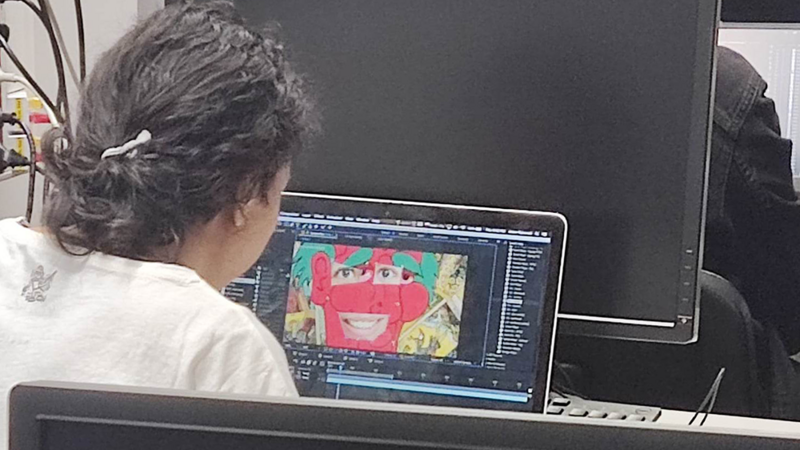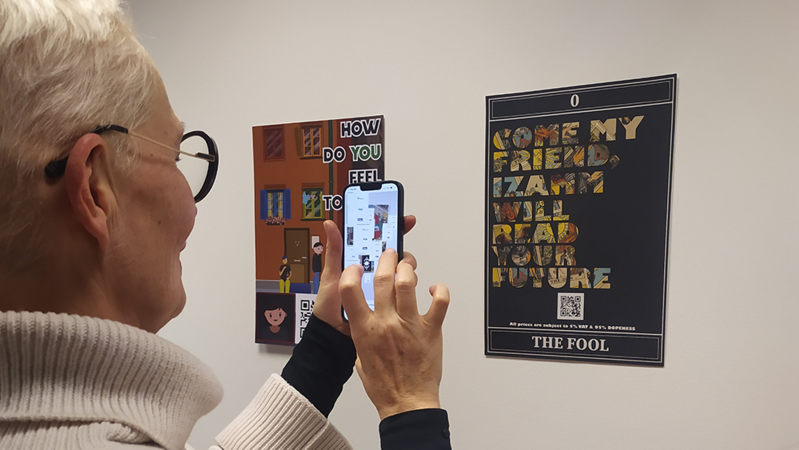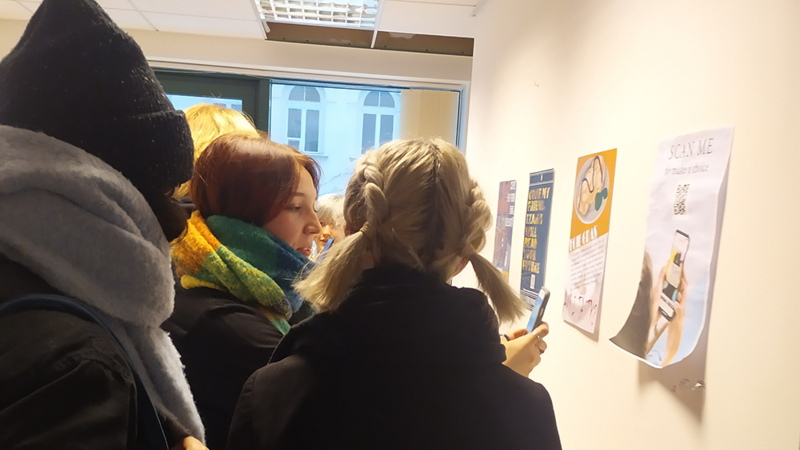The idea of cooperation with a unit from the capital was not accidental. For years, PJAIT has been famous for implementing new technologies in art, while in the curriculum of the Creative Writing study programme at the University of Lodz, some space is devoted to unusual material forms of literature and electronic literature itself. It turned out that there is an area in which students of both universities can join forces and act together, using their various competences.
At the Creative Writing classes, we analyse the latest forms of new media stories, we also look at storytelling in XR, including poetry and narratives created using augmented technology or virtual reality. We also try to explore this topic from the practical side. While we create some simpler forms of electronic literature (e.g. hypertext novels) without any problems as part of obligatory courses, in the case of more technologically advanced projects we are happy to establish cooperation with specialists. We assumed that the goal of the university should also be to prepare students to work in interdisciplinary teams. The idea was for them to see if this is something they would like to do in the future.
– explains Dr Agnieszka Przybyszewska, a lecturer at the Department of Theory of Literature at the University of Lodz and the initiator of the cooperation with PJAIT
In an international and interdisciplinary manner
The classes entitled "Poszerzone przestrzenie słowa.Technologia rzeczywistości rozszerzonej w pracy literata" [Extended word spaces. Augmented reality technology in the work of a writer] took the form of workshops and were proposed as an optional elective. It was intended to be an interesting option for all those who had already acquired basic knowledge of electronic literature and wanted to see for themselves how the use of new technologies may look like in practice. The opportunity to work in an international team was an additional incentive. PJAIT students are mostly from abroad, which is why all the classes were held in English.
What we proposed to our students was to "take them out" of normal life at the faculty for a week, go to Warsaw and "insert" them in the creative process in an international group. We wanted them to see what it's like to work with people who have completely different competences. The idea was for them to develop a common language with them and learn how to communicate and achieve common goals.
– explains Dr Przybyszewska
The adaptation process went smoothly
During the first class we got to know each other and the subject of the workshop itself. At the next meeting, we were already divided into groups that formed spontaneously, along with further conversations about what we would like to do. The instructor helped us choose the best way to implement our ideas.
– recalls Natalia Krupko, the second-year student of Creative Writing and the workshop participant

We spoke English at all times. We sat in a circle and presented what we had to offer. The students of Creative Writing could take care of the storytelling part, while people from the school in Warsaw talked about their graphic or IT skills.
– adds Aleksandra Niedźwiedzka, another student who took part in the classes
Interaction is the key to success
The projects that the participants of the typography workshops worked on were supposed to tell a story, whose course and ending depended on the behaviour and decisions of the recipient. The narration was controlled via a smartphone application, which was activated after scanning the QR code.

Our project was an interactive birthday card. As you pressed specific piano keys, the scenery changed. At the end, there was a happy ending after choosing the correct sequence. However, when something went wrong, the story ended less optimistically.
– explains Natalia
We, in turn, in our group prepared a poster that could be hung on the wall. After scanning the QR code placed on the poster, the fortune teller appeared on the phone and placed four tarot cards in front of us. The recipient had to make a choice and on this basis their future was predicted. The fortune teller, on this occasion, of course tried to deceive their "client" and demanded payment for the performed service. They could be finally discarded by choosing one more specific card. Therefore, the course of the interaction depended on the decisions made by the recipient.
– clarifies Aleksandra
Not only workshops
For the Creative Writing students, the visit to Warsaw was not only an opportunity to acquire practical skills, but also an opportunity to broaden their knowledge by participating in thematic events that took place in the capital at that time. The students attended the VR festival, thanks to which they had the opportunity to meet interesting people working in this industry on a daily basis.
How do the participants remember the workshops in retrospect?
I think that the classes showed us the possibilities and made us realise what we can do with the fact that we can write. It was such an opening to other media and new paths. We realised that we don't just have to write, but this aspect of telling a story can be combined with something else. It can be, for example, a story told over the phone, not necessarily just read.
– Aleksandra
During the workshop, the emphasis was placed on other ways of telling stories. We focused on the interactivity, which I found very interesting. I had a lot of fun – with telling the story not only through words and written text, but also through images and the interaction with the recipient.
– Natalia

From Lodz and Warsaw to London
Positive impressions from the workshops are not only the subjective feeling of their participants. The activities of students of both universities were appreciated by an international group of experts. Selected works co-created by the students of Creative Writing as part of workshops conducted in this and the previous academic year were accepted for a hybrid exhibition entitled "XROSSSPACE SHOWCASE: On the Other Side" as part of the festival, which will take place in London at the turn of March and April. During the event in the capital of Great Britain, the best Polish XR projects will be presented.
This is an incredible success of our students and proof that the inter-university cooperation initiated by the Department of Theory of Literature of the University of Lodz was an excellent decision.
– concludes Dr Agnieszka Przybyszewska
The works co-created by the students of Creative Writing at the University of Lodz will be available at the online gallery, which is an extension of the physical exhibition at the BFI.
Text: Bartosz Burski (Faculty of Philology, University of Lodz)
Photos: Aleksandra Niedźwiedzka, Dr Agnieszka Przybyszewska
